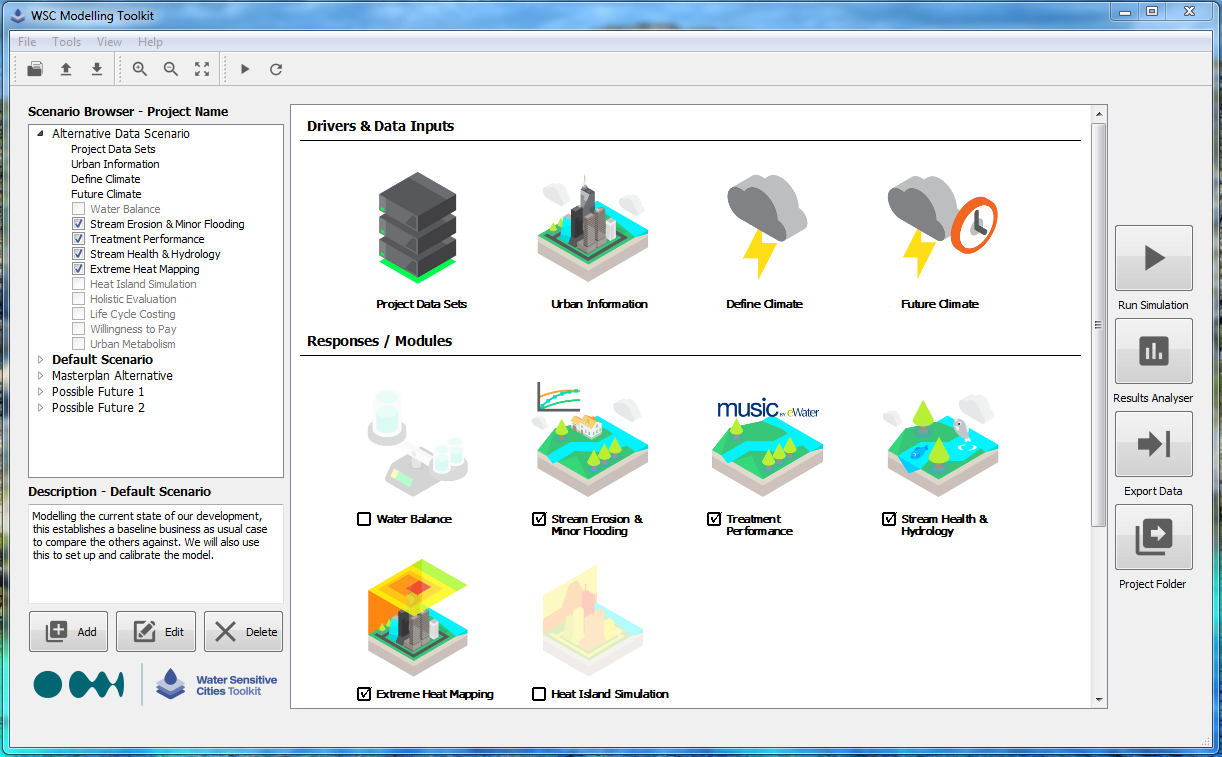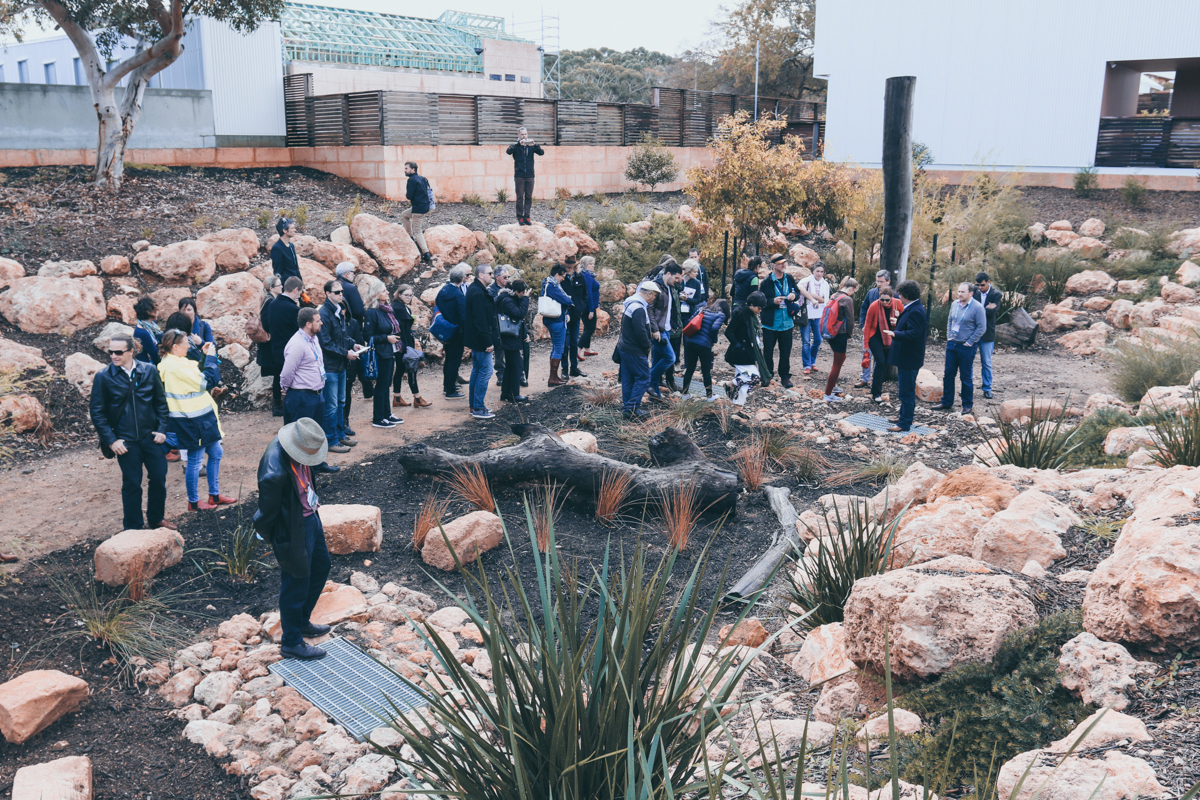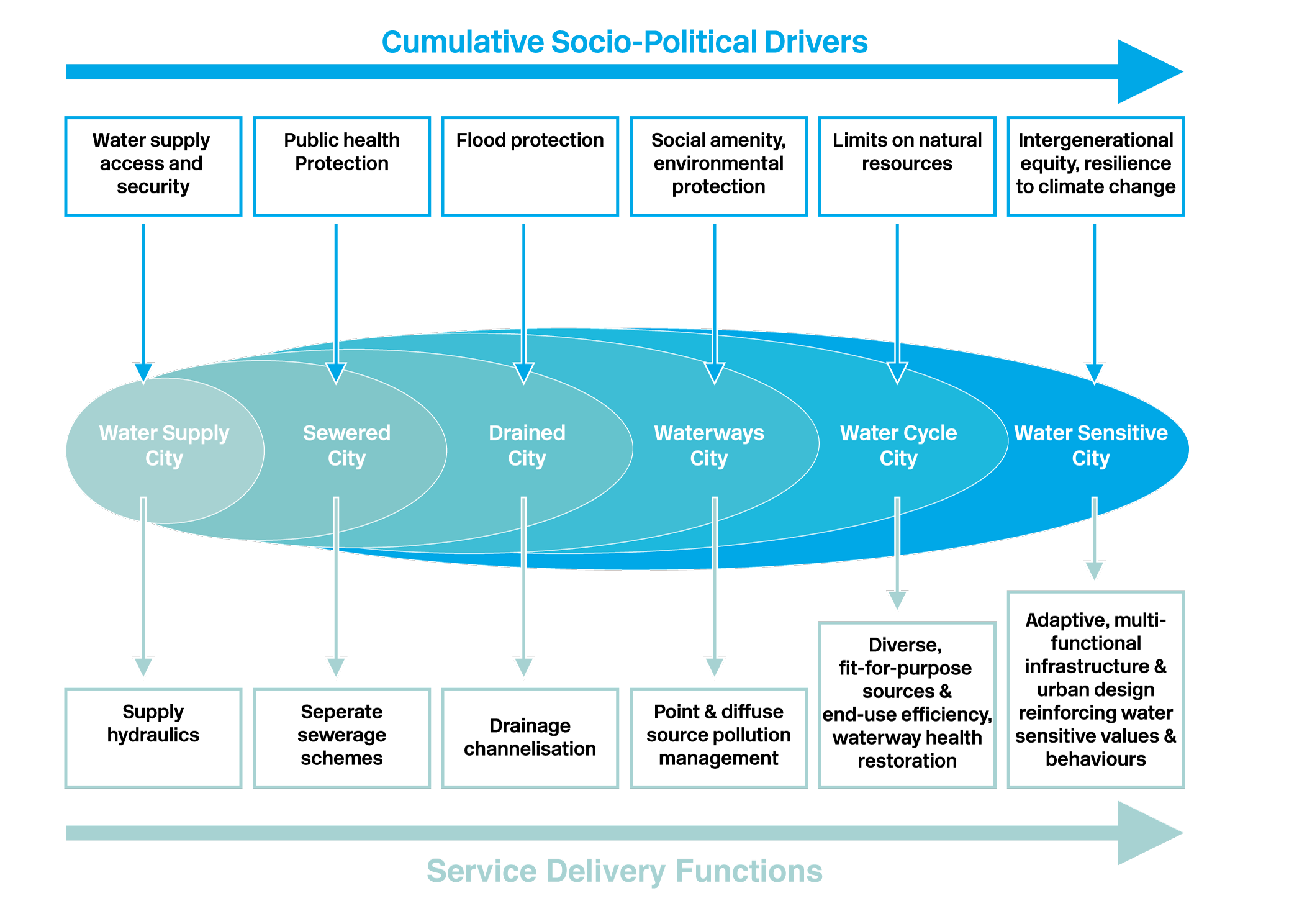Turning knowledge into action (Part 4)
Reflecting on knowledge gained since 2012: technologies for the future
Power through partnerships (Program D)
Having established the “why”, “where” and technical “how” of creating water sensitive cities, the final program of the CRC for Water Sensitive Cities (CRCWSC)'s Tranche 1 aimed to mobilise a “coalition of the willing and able” to adopt and implement those advances for tangible action on water sensitive futures.
The aims of this program were to train, support, and develop enduring partnerships between government, the water sector, industry, and water users to adopt the water sensitive practices developed in Programs A–C and to advocate for their use more broadly.
A toolkit for planners
One vital adoption support tool, the Water Sensitive Cities Modelling Toolkit, supports both strategic planning and business case development for water sensitive urban projects (Projects D1.1 and D1.5) via three practical components:
- Combining urban planning information and geospatial data to enable strategic planning and design: the toolkit uses the UrbanBEATs modelling tool to automatically generate stormwater management options for a given area
- Future climate change variability – based on a database of local rainfall predictions, this is also useful to assess future climate scenarios
- Scenario assessment and evaluation of benefits – including the performance of water treatment regimes, their impact on stream hydrology and water quality, stream erosion potential, and impact on microclimate.
The toolkit makes it possible to quantify the benefits of water sensitive urban design projects, and its main audiences are urban and water planners in government and water utilities, and consultants supporting water sensitive urban development or redevelopment plans. After undergoing two rounds of testing and industry feedback, the toolkit is now approaching its Version 3 beta and incorporates valuable additional detail, such as the fine temporal and spatial resolution data that were generated by Project B1.1 (Urban rainfall in a changing climate).

And here’s how it’s done
Convincing proof-of-concept is a critical factor for the adoption of new water management practices. Meeting that need was the focus of a series of demonstration projects (or case studies) across Australia (Project D1.4), in which stakeholders’ recognising a new opportunity has been a consistent theme.
One such example, Aquarevo, is “a concept taking the [development] industry much further”, according to one user. Driven by South East Water and Villawood (with ideas facilitated from early stages by the CRCWSC’s Research Synthesis process), the Aquarevo development captures the opportunity to demonstrate latest, leading water technologies in a single site. Among the featured innovations are on-site water recycling and rainwater tanks that bring to life a first for Victorian urban development, by freeing up about 35% of a household’s water demand.
Like other case studies, in Victoria and Western Australia, the project showcases design and technological innovations in water planning and will provide valuable learnings and “scaled up” insights for redevelopment projects in the future – particularly with a growing focus on integrated, environmentally conscious, and collaborative projects.

So how are we doing? Benchmarking progress
As water sensitive development approaches become an increasingly important part of urban planning across cities globally, benchmarking makes it possible to celebrate progress and to keep track of what’s yet possible based on the latest research.
The Water Sensitive Cities Index, one of the major legacies of Tranche 1, enables cities to set water sensitive performance targets, measure progress, and rank their achievements against other cities or municipalities on the same path. The Index incorporates benchmarking along the six city states continuum and by using the seven goals (such as managing water to increase community capital, improving ecological health, and achieving equity of essential services) and 34 main indicators that comprise the attributes of a water sensitive city.

In 2016, the tool was road tested with the Moonee Valley City Council in Melbourne, Victoria. Using the city state benchmark, the council found that it had fully attained the water supply city and sewered city states, indicating the local community’s reliable access to drinking water and sanitation, as would be expected in a developed country like Australia.
But some necessary improvements in areas experiencing occasional flooding, and additional pollution controls to maintain water quality in local waterways were also highlighted, indicated by slightly lower rankings in the drained city (83%) and waterway city (78%) states. At even more advanced levels, a score of 44% in the second highest state revealed an as-yet largely unfulfilled potential in decentralising water supplies and stormwater harvesting, while on the ultimate city state (water sensitive city) – the highest level of water sustainability – the council’s current score of only 6% reflected its primary focus on water demand management over water sensitive practices.
A detailed assessment of performance against the water sensitive goals and the three pillars of practice required to produce water sensitive cities – cities as catchments, cities that provide ecosystem services, and establishing water sensitive communities – subsequently highlighted where council had the biggest opportunities to improve practices and led to the drafting of a nine point plan to guide the way. In this way, the Water Sensitive City Index is able to provide a baseline benchmark and to keep track of progress if reapplied at intervals in the future.
When push becomes pull
At the conclusion of Tranche 1 of the CRCWSC’s research, the range of its achievements and those of its partner organisations is long and impressive. Technologies, methodologies, and processes are now in place to support water sensitive urban improvements at many scales, and refinement of large support mechanisms such as the Water Sensitive City Index through road testing and further consultation is still underway.
Education and promoting the transfer of evidence and knowledge into policy, have guided not only Program D (Adoption Pathways) but will underpin the CRCWSC's focus on impact during Tranche 2. The commencement of Tranche 2 of the CRCWSC sees a shift in focus from research and development to implementation and uptake of outcomes. At this juncture, perhaps the main measure of success will be when the research community’s push of its innovations makes way for the water industry’s pull to implement them.
Nicola Markus for the Mind Your Way team.
References
Brown RR, Keath N, Wong THF (2009) Urban water management in cities: historical, current and future regimes. Water Science and Technology 59:847-855. doi: 10.2166/wst.2009.029
Wong THF, Brown RR (2009) The water sensitive city: principles for practice. Water Science and Technology 60:673-682. doi: 10.2166/wst.2009.436